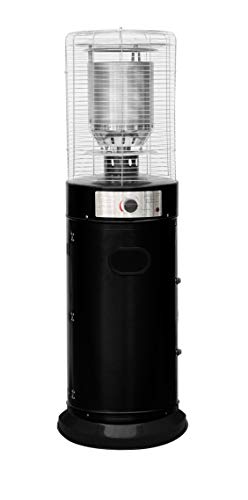Cheap Patio Gas Heaters
Patio heaters are available in a variety of sizes and styles. Some are hardwired electric and require professional installation, while others utilize propane or natural gas to heat your space.
Mobile gas cylinders are available in sizes ranging from 5kg bottles for patio use to 13kg propane cylinders. They work with conventional BBQs as well as mobile heaters, and Ooni pizza ovens.
Cost
The addition of a gas heater for your patio to your business or home can increase the value of your property and the number of people using your outdoor space. It's a much less expensive alternative to other outdoor heaters, like wood-burning fire pits or propane heaters. The gas heater for the patio is also suitable for indoor use to create a cozy environment in winter.
The cost of propane for your patio varies depending on the type and size of the appliance. For example, a 5-kg bottle of gas for your patio costs around PS28. This includes a 27mm clip-on regulator that is compatible with all barbecues and patio heaters. Certain patio heaters may require an additional regulator.
A propane gas cylinder is the ideal choice for BBQs, pizza ovens, and tabletop heaters. It is non-odorous and inexpensive. It is easy to store and move. The majority of propane-powered appliances are sturdy and safe. They last for a long time and are an excellent choice for businesses and homeowners who need to save money on heating expenses.
Propane is a green, clean-burning fuel that can be used to heat cooking, cooking, and other applications. It is also less expensive than electricity and has lower maintenance costs. gas patio heater sale is also less affected by price fluctuations.
Efficiency
Gas patio heaters are an efficient method of heating outdoor spaces. They can heat up an area of 215ft2 quickly and efficiently. They do not require installation and are able to be moved easily. They can also be switched on and off with the remote control or a timer. Some models have an automatic shutoff function to prevent accidental fires.
When it comes down to choosing the gas type to use there are two choices available: propane and butane. Butane is more frigid than propane. Both are LPG however they differ in their boiling point and speed of boiling. Butane, which is also known as "patio gas" is usually stored in green cylindrical containers. Propane is stored in red containers. Both kinds of gas are compatible with most standard BBQs and patio heaters, and are readily available at many garden and home centers.

Patio gas bottles come in a variety of sizes between 5kg and 13kg. They are designed to fit snugly inside your BBQ or heater. They are compatible with regular BBQ regulators and some come with an indicator that informs you that the gas is low. You can save money by using butane instead of propane. Most appliances are able to be modified to run with either fuel.
Butane is most efficient in warm weather. It is perfect for BBQs as well as camping gas stoves and portable heaters. It's less efficient in the winter, as it cannot flow at low temperatures. It is an energy source that is low in toxicity and has a low carbon footprint. This is a great choice for those who are concerned about the environment.
When using a gas patio heater it is crucial to follow the instructions of the manufacturer on how to operate and maintain the appliance. It is essential to follow the instructions of the manufacturer to avoid poisoning by carbon monoxide. Also the appliance should not be exposed to naked flames and high temperatures. In addition patio heaters should be installed in open areas with adequate ventilation. They should not be used indoors or in enclosed spaces.
Safety
It is important to consider the safety of using propane gas on your hearth or patio. These safety measures include safe storage and handling, the use of Personal Protective Equipment and establishing emergency procedures. For calor gas patio heater , cylinders need to be stored in a specific location, away from ignition sources and should not be moved. Gas must be shut off and personnel evacuated in the event of there is evidence of leakage. All cylinders should be clearly labeled with the contents and the supplier's information. They should also have a valve that can be opened manually with no force.
